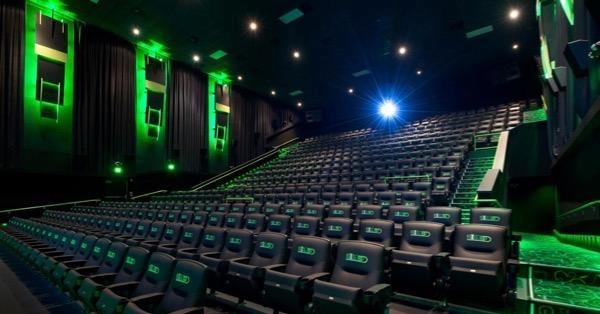Are We Ready for Movie Theaters to Reopen?

Some pundits believe that the market for streamed movies will compensate for any permanent closing of theaters. For instance, the latest Trolls film earned a hefty bundle when it went direct to streaming. I’m no expert on the theatrical vs. streaming channels (I’m not sure anyone is), but I don’t see a streaming model that will pay the production and marketing costs of the next Marvel blockbuster. As the saying goes, No Bucks, No Buck Rogersor no Marvel. If you want a steady diet of Oscar Bait, or the original, stand-alone, film-like dreck content that dominates the direct to streaming market, that’s what you might get if the theaters all close.
Home theater fans don’t spend thousands of dollars to load up their homes with enough gear to launch the next astronaut into space just to watch Downton Abbeyor Victoria & Abdul, though they might appreciate such beautifully scripted and acted productions. I know I do, but I’d still miss the latest throbbing actioner like the Mission Impossible series , fantasy fests like almost anything from Marvel, or sci-fi fests like The Edge of Tomorrow, Arrival, or Galaxy Quest (the best Star Trek film ever made!). Those are the films that rake in the big bucks on your local theater and pay for their AMC IMAX or Dolby Cinema screens.
This isn’t the first time movie theaters have been written off as obsolete. Pick any headline like, “Will Movie Theaters Survive Covid-19,” substitute “Television” for Covid-19, and you’ll likely find a similar headline in any newspaper from the early 1950s. In 1948, movie studios had to divest ownership from theater chains they had owned for decades. There was also World War II and before that the Great Depression of the 1930s. But even during the latter era 65% of Americans went to the movies at least once a week. It helped that ticket prices then were around 25 cents, but that’s relative to the average annual household income in 1935 of under $500.
Today the average price is just under $10roughly double any inflation-adjusted increase from that mid 1930s price. But the 3 million Americans who still attended a movie theater each day before the current pandemic (a significant number, but a fraction of the patronage in the 1930s) weren’t enough to cover the studios’ production and marketing costs. If you want to know where all the money goes, just sit through the end credits for any recent blockbusteror even a modest comedy. Movie production is notoriously inefficient (a subject for another time) which is why Hollywood now counts on overseas revenue for balancing the bookseven engaging in self-censorship to get it.
But will people warm up to going back to movie theaters after they reopen? A recent study by the firm EDO, as reported on Deadline.com, suggests that 75% of theatergoers might, but with conditions. Those include frequent cleaning of the theaters, limited seating allowing for distancing, temperature checks on entering, the wearing of masks, and sufficient hand sanitizer dispensers in the theater. These seem doable, but in the end some of them may actually discourage attendance. Masks in particular are uncomfortable and make it harder to breathe. But laughing, gasping, or cheering by the audience will generate more droplets on exhalation than simple breathing (an issue that will be even more significant at sporting eventsa related “if you play it, will they come?” subject).
Thankfully, the fatality rate of Covid-19 is extremely low among the young. My guess is that the vast majority of theatergoers are under 44 and possibly even under 25. According to the CDC, in the 2-month period from late March 2020 to late May 2020 a total of 112 deaths were reported for Americans under 25, and a total of 2056 were under 44. Of course every one of those was a tragedy, but compare those numbers number with the total for all ages of about 80,000 over the same period.
It’s true that some folks won’t take even the smallest risk until there’s a vaccine. But similar, existing flu vaccines have never been more then 60% effective and more often under 50%. And only 40% of Americans ever get a flu shot. I suspect that most weren’t even aware, before the current situation (and still might not be), that in an average year the death toll from “ordinary” flu in the U.S. can be over 50,000. That sounds scary, but in the context of almost 3 million Americans who die of all causes every year, this wouldn’t even generate a headline on page twelve of the New York Times.
But vaccines do help in the ultimate goal of herd immunity. Once people feel comfortable they’ll be ready, in sufficient numbers, to go back to the theaters. The only question is whether the theaters will still be there for them. I think they will.





























































